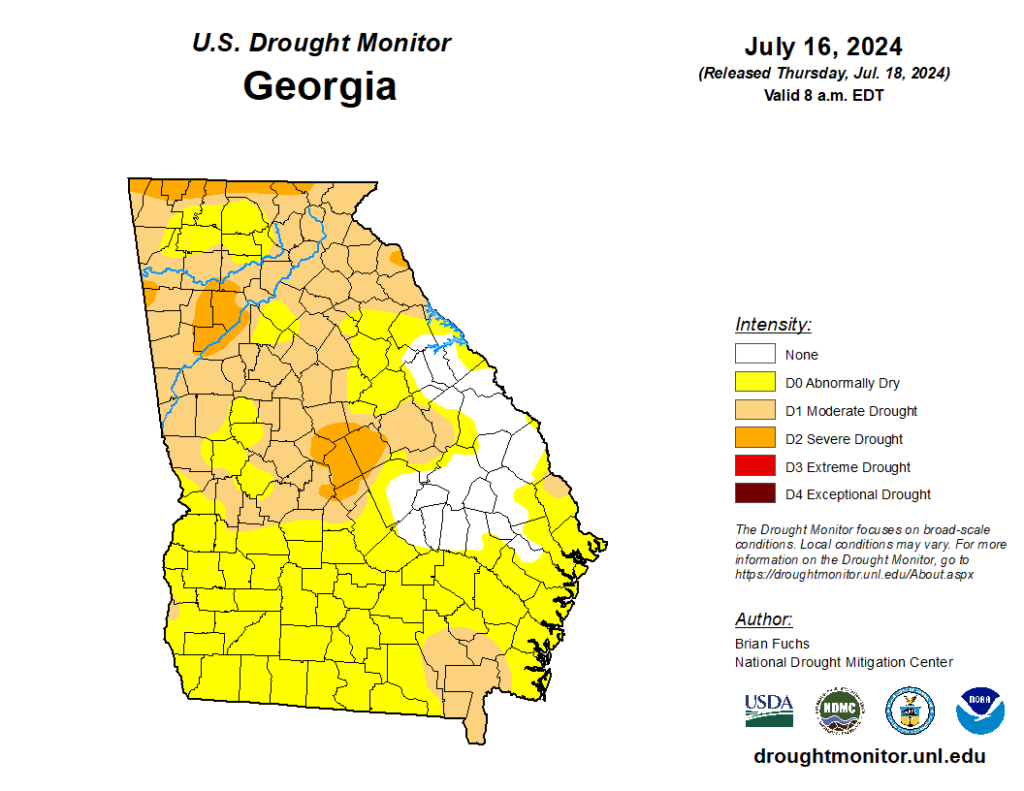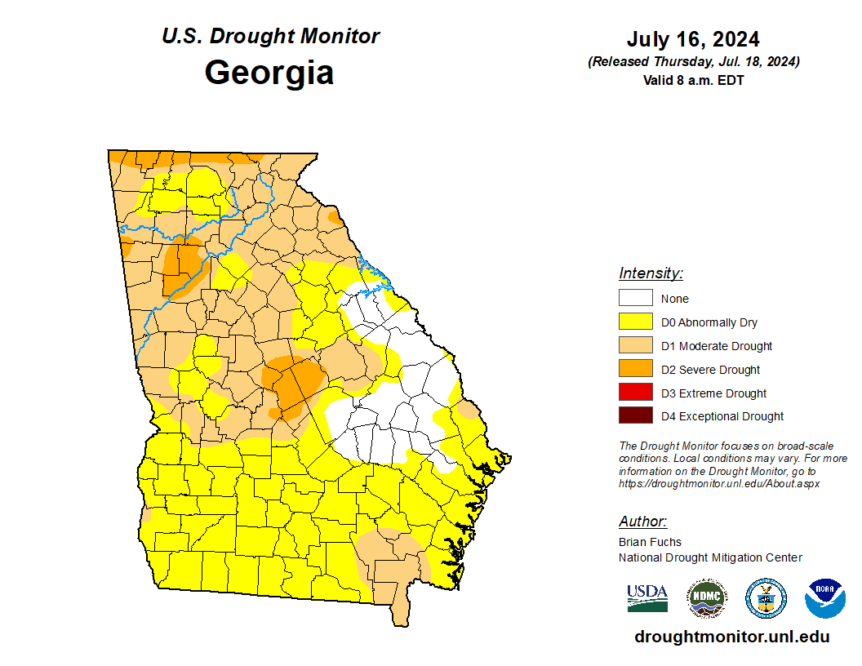
By Clint Thompson
Dry weather this time of year is not always a bad thing for pecan producers, but that is contingent on growers having irrigation set up for their orchards.
“We recommend that you don’t even try to grow them without irrigation to begin with,” says Lenny Wells, University of Georgia Extension pecan specialist. “For growing pecans, it’s actually better to have dry weather if you’ve got irrigation than it is to be getting rain.”
According to the most recent release of the U.S. Drought Monitor, almost all of southern Georgia is abnormally dry. Most of the central and northern areas of Georgia is moderately dry, though a few areas are severely dry.
Rainfall has been more consistent in recent days, but it has also been spotty in areas. Many orchards have not received rains, which has spared growers from scab disease flaring up severely.
“More than anything, it’s probably helping us with the scab issue. It probably kept it from being as bad as it could have been if we were getting a lot of rain,” Wells said. “It’s just a big battle on trying to keep scab off of them when we’re getting a lot of rain.”
Scab is a fungal disease that infects the leaves or nuts of pecan trees. If scab impacts the nut early enough in the production season, it can cause the nut to blacken and fall from the tree. It excels on trees that have received moisture. Some growers must make at least 10 fungicide applications during an average year to manage the disease.










